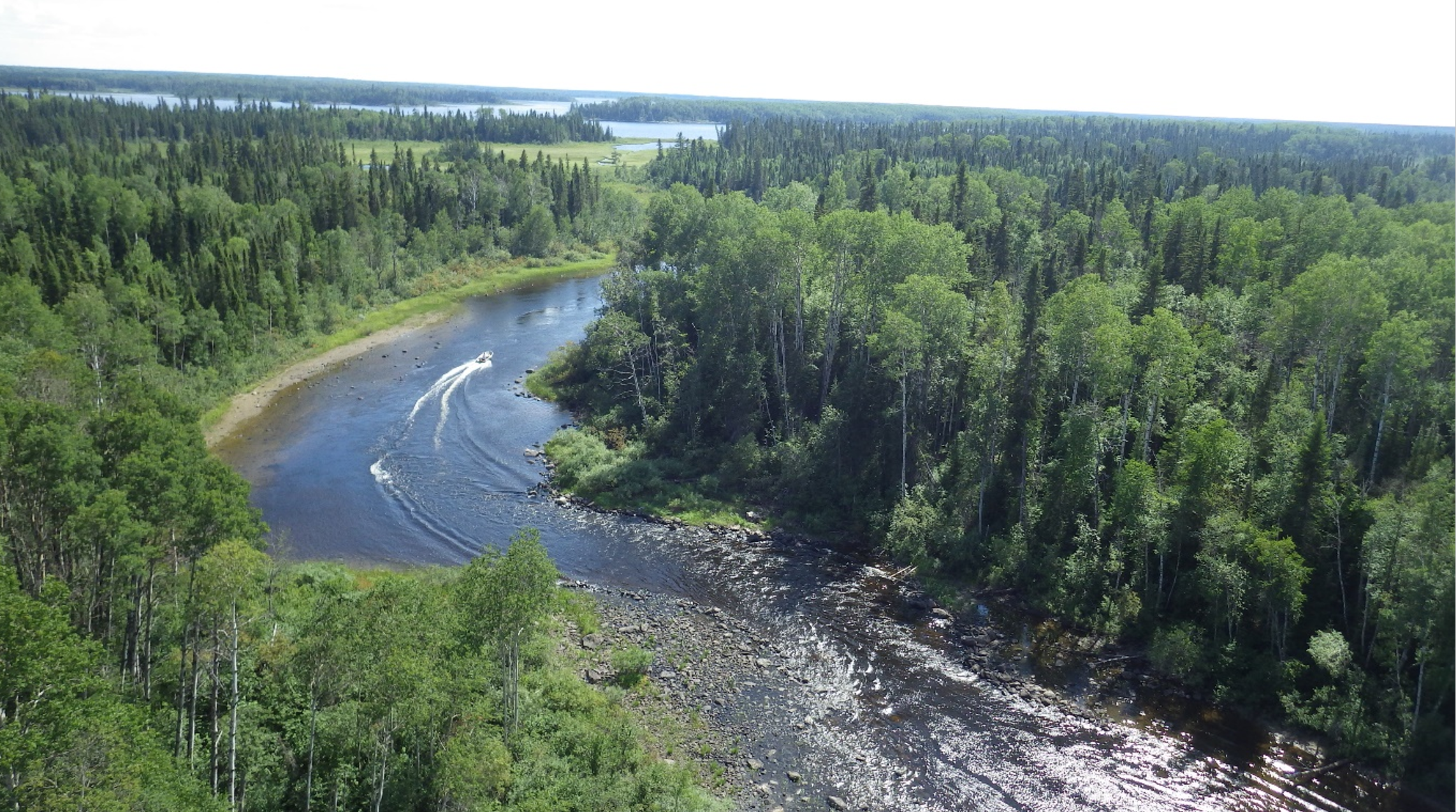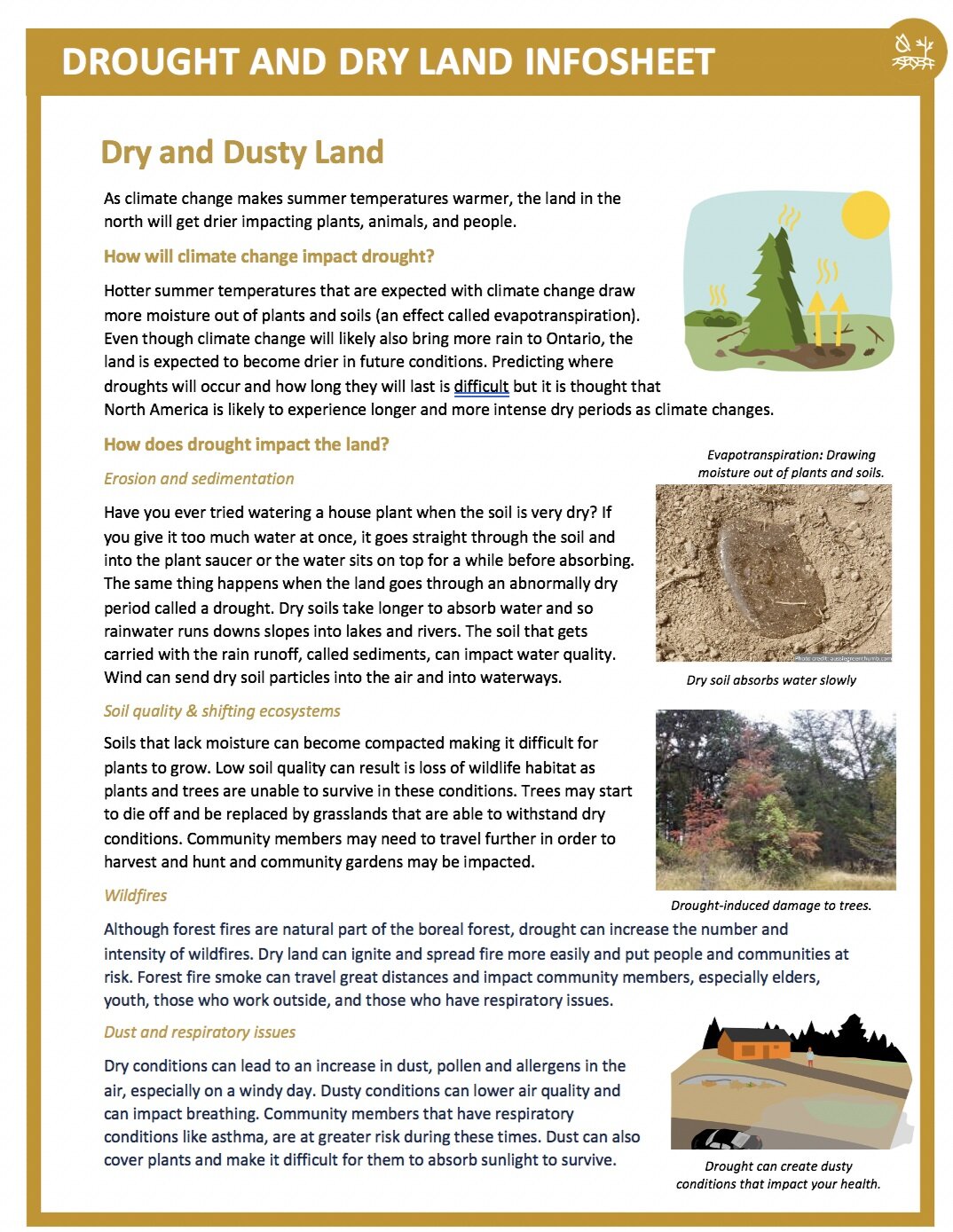Climate change is leading to low water and dry land
Drought is a temporary dry period with less rain compared to normal for a particular location. Climate change could increase periods of drought in the north. Warmer temperatures in summer will also drive more evaporation and lead to drier conditions on the land and lower water levels in lakes and rivers. Plants, animals and people may struggle to get the water they need, country foods may become more difficult to find and wildfire risk may increase.
In northern Ontario, people have already noticed dead trees, disappearing ponds and low water levels in lakes and rivers used for drinking water.
Communities can prepare for drought and dry spells by:
monitoring for drought conditions in their area
assessing drought vulnerability and making a plan
monitoring and protecting important plants and animals
monitoring and protecting important habitats
monitoring water levels
finding alternative routes when water is low
assessing drinking water systems
sharing about water conservation









